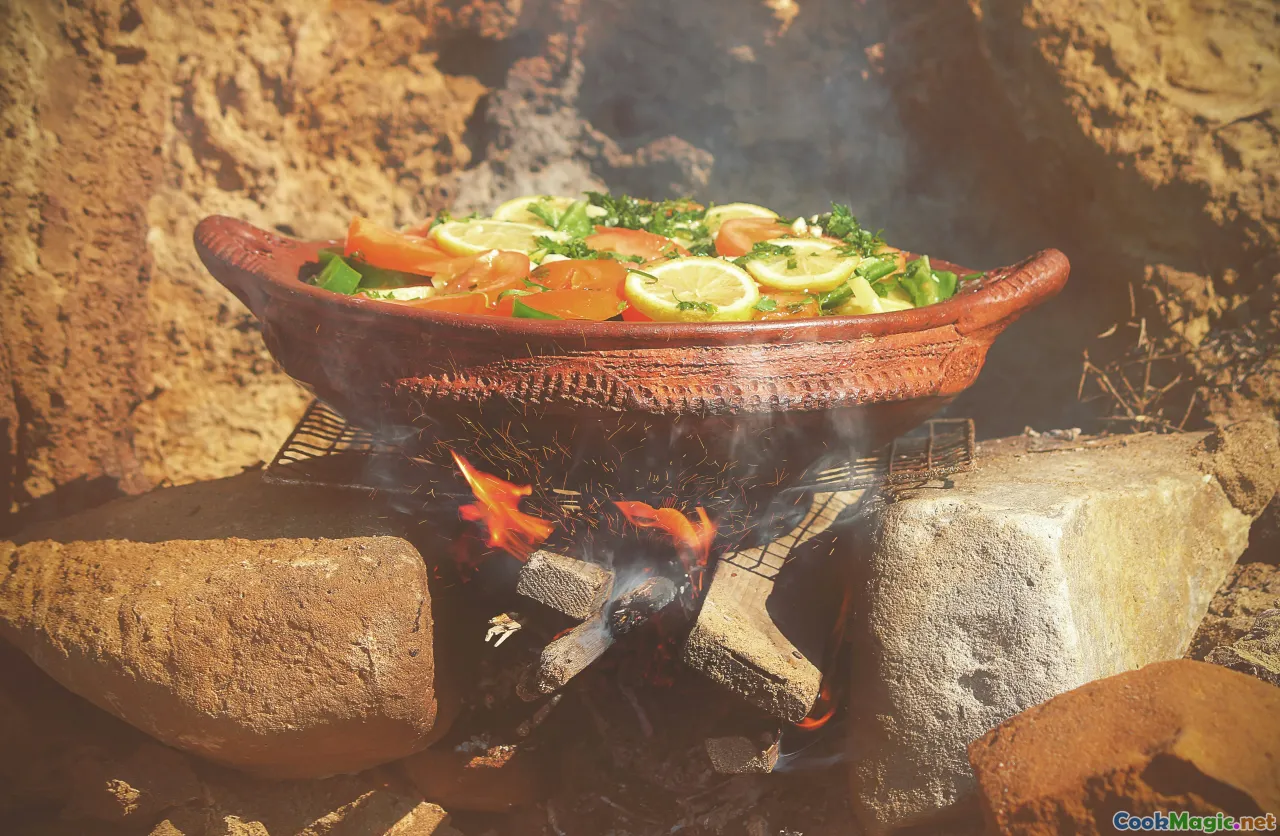Vegetarian Kenyan Stews Full of Local Flavor
11 min read Explore vibrant vegetarian Kenyan stews rich in authentic flavors and traditional ingredients that showcase the country's culinary diversity. August 03, 2025 00:05
Vegetarian Kenyan Stews Full of Local Flavor
Kenya’s culinary landscape is a vibrant tapestry woven from diverse tribes, rich soils, and centuries of storytelling through food. Among its most cherished dishes are the hearty, flavor-packed vegetarian stews that encapsulate the soul of Kenyan cuisine—vibrant, comforting, and bursting with locally sourced ingredients. These stews are more than just meals; they are cultural expressions, preserved traditions, and culinary love letters served in bowls.
In this exploration, we’ll immerse ourselves in the world of vegetarian Kenyan stews—delving into their history, ingredients, traditional preparation methods, and the sensory delights they offer. Whether you’re an adventurous cook, a curious foodie, or someone seeking plant-based comfort food infused with Kenyan flair, this guide aims to inspire and inform.
The Cultural Soul of Kenyan Vegetarian Stews
Kenya is a melting pot of over 40 distinct ethnic groups—each with its own food heritage. While meat dishes like nyama choma dominate the mainstream image, vegetarian stews form a fundamental part of local diets, especially among communities where pastoralism is less prevalent. These stews often feature an alliance of lush vegetables, legumes, and tubers, slow-cooked with flavorful spices that reflect the regional climate and cultural influences.
For instance, the Kikuyu and Luo communities have long-standing traditions of consuming hearty vegetable stews that are both affordable and culturally significant. These dishes are often shared during family gatherings, community feasts, or religious celebrations, symbolizing unity and respect for the land.

Ingredients That Speak of the Land
What makes Kenyan vegetarian stews truly outstanding is their ingredient palette—fresh, seasonal, and locally available. Root vegetables like yams (also called sukuma wiki for the leafy greens), sweet potatoes, and Irish potatoes sit at the core, mingling with legumes such as kidney beans, green grams (ndengu), or chickpeas. Leafy greens like kale (sukuma wiki) and spinach add a fresh, slightly bitter contrast.
Flavorful spices and aromatics are essential to elevate the earthy ingredients. Turmeric, cumin, coriander, smoked paprika, and pepper are frequent companions, along with local additions like ginger, garlic, and Nairobi’s famous pilipili (hot chili peppers). Bitterness from greens and sweetness from carrots or beets balance the spices beautifully.
Regional variations might include coconut milk in coastal areas, giving a creamy twist reminiscent of Swahili flavors, or the use of fermented techniques that add depth to the flavor.

How to Make a Classic Kenyan Vegetarian Stew
Creating an authentic Kenyan veggie stew at home is a labor of love, rooted in patience and care. Here’s a simplified approach that captures the essence:
Ingredients:
- 2 cups kidney beans or
ndengu(soaked overnight) - 1 large onion, chopped
- 3 cloves garlic, minced
- 1-inch piece ginger, grated
- 2 carrots, chopped
- 2 potatoes, cubed
- 1 bunch kale or spinach, chopped
- 1 can coconut milk (optional for coastal flavor)
- 1 teaspoon turmeric
- 1 teaspoon cumin
- 1 teaspoon coriander
- Chili to taste
- Salt and pepper
- Cooking oil
**Method:**1.Prep your ingredients, soaking the beans ahead of time or using canned ones for convenience. 2. In a large pot, heat a tablespoon of oil, then sauté onions, garlic, and ginger until fragrant—aromatic waves filling your kitchen. 3. Add the spices—turmeric, cumin, coriander—and cook for another minute to awaken their essential oils. 4. Introduce carrots and potatoes, cook for about 5 minutes, stirring occasionally. 5. Pour in the beans and enough water or broth to cover the ingredients. Simmer until the beans are tender, about 30-45 minutes. 6. When the stew thickens and the vegetables are soft, add the leafy greens and coconut milk (if using). Cook for an additional 10 minutes. 7. Season with salt, pepper, and chili to taste.
Serve hot with ugali (maize porridge), chapati, or roasted cassava for a complete authentic experience.

Regional Flavors and Innovative Twists
Much like the diverse Kenyan landscape, its vegetarian stews vary significantly along regional lines.
-
Coastal Kenya: The flavors here are influenced by Arab, Indian, and Swahili traditions. Coconut milk, turmeric, and kaffir lime leaves flavor coastal stews that feature ingredients like jackfruit, rich in fiber and texture, or mchuzi wa mbaazi (pigeon peas), creating a tropical taste adventure.
-
Rift Valley and Central Kenya: The emphasis is on hearty root vegetables, beans, and greens, with spices like cumin and coriander dominant.
-
Nairobi and Urban Settings: Modern takes include creative amalgamations such as adding quinoa, millet, or sweet corn, reflecting a fusion of tradition and global health trends.
Some innovative cooks are experimenting with smoky flavors—adding smoked paprika or charred vegetables to deepen flavor without meat.

Pairing and Serving Traditions
Kenyan cuisine encourages communal eating—platters brimming with vegetable stews are shared among friends and family, fostering a sense of community. The stew's warm aroma beckons with notes of spices, lingering on the senses.
Traditionally, these stews are served atop ugali, a dense maize porridge that mops up the flavorful sauce perfectly. The moist, slightly sticky texture balances the spices, creating a comforting harmonious bite.
In coastal regions, the stew might be paired with mwanga(coconut rice) ormandazi(fried dough), whereas urban settings might offer a side of roasted chapati or even bread.Tip: For a nutritional boost, sprinkle some fresh lemon juice or add a dash of hot pepper just before serving.

Nostalgia and Personal Stories Around Kenyan Vegetarian Stews
Many Kenyans, especially those who grew up in rural areas, recall their childhood mornings with the scent of a simmering vegetable stew wafting out of their homes—a smell that evokes warmth and security. It’s often accompanied by stories of family gatherings, where recipes have been passed down generations.
My own journey into Kenyan vegetarian stews began with a visit to the lush central highlands, where farmers brought fresh greens and beans daily. Sitting around a fire, I watched hands—aged and steady—stirring pots, whispering stories into spices, before sharing bowls of thick, fragrant stew.
These dishes are more than sustenance—they are carriers of history, symbols of resilience, and embodiments of Kenya's deep respect for the land and its bounty.
Tips for Making Your Own Kenyan-Inspired Vegetarian Stews
- Use Fresh, Local Ingredients: Seek out fresh greens, tubers, and beans. The quality of your ingredients will shine through.
- Balance Your Spices: Don’t shy away from bold flavors; turmeric and cumin are key, but add chili or ginger in moderation to suit your heat preference.
- Cook Low and Slow: Patience enhances flavor development; simmering allows spices to infuse deeply.
- Embrace Variations: Feel free to add coconut milk, fermented greens, or different legumes based on what’s available or your taste.
- Finish with Freshness: A squeeze of lemon or a handful of chopped herbs can brighten the dish.
With these insights, even a novice cook can craft a vegetarian Kenyan stew that tantalizes the senses and honors a cuisine rooted in history, community, and celebration.
Don’t be afraid to experiment, adapt, and most importantly, enjoy the process of connecting with Kenya’s rich plant-based culinary traditions. Your bowl of stew isn’t just food; it’s a taste of a land’s heart and heritage.
So next time you want to warm your soul with vibrant flavors, try your hand at these Kenyan vegetarian stews—full of local flavor and rich in soul.
— Kenyan cuisine is waiting to be savored, one delicious bowl at a time.









